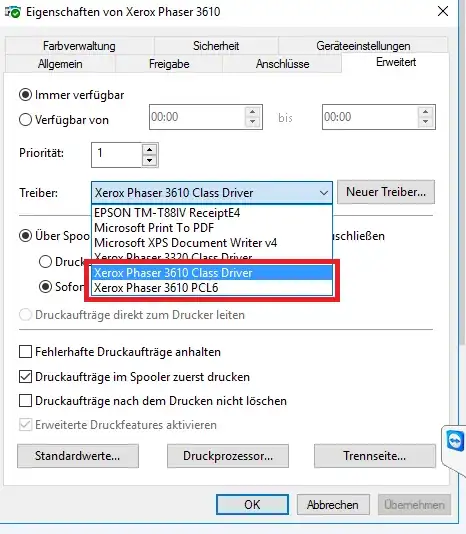Class printer drivers, also known as Type 4 or v4 printer drivers, are a new driver type that was introduced in Windows 8 and Windows Server 2012. They are a type of "universal" driver that are included with the Windows operating systems.
https://docs.microsoft.com/en-us/windows-hardware/drivers/print/v4-printer-driver
Printer sharing is a key value proposition item for Windows servers.
The v4 printer driver model was designed to make sharing easier and
more efficient by eliminating the need to manage drivers across
processor architectures.
Basically, the drivers are made to be more universal and work on both x86 (32 bit) and x86_64 (64 bit) architectures. Other advantages are enhanced compatibility with UWP apps and faster driver setup from print servers. Additionally, these drivers tend to have less features than regular drivers.
One downside is these drivers do not tend to play well with macOS. If you run a mixed environment and want Macs to print through your print server, you'll probably be better off using Type 3 print drivers.
If you use a Type 4 driver and attempt to print from macOS using LPD to a Windows print queue, the print job may fail silently. If you enable the PrintService log in Event Viewer and look in the Admin log you'll see the following error:
The document Print Document, owned by {user} ({IP address}), failed to print on printer {Printer Name}. Try to print the document again, or restart the print spooler.
Data type: RAW. Size of the spool file in bytes: 26114. Number of bytes printed: 26114. Total number of pages in the document: 0. Number of pages printed: 0. Client computer: \\{Print Server}. Win32 error code returned by the print processor: 2147500037. Unspecified error
On Windows Server you can tell whether your drivers are Type 3 or 4 by looking at the Driver Type column in Print Management.
The easiest way to get a non-Class driver is to click "New driver..." and click the Windows Update button. Once the driver list loads, all the Class drivers should be gone. If the driver you want isn't in that list, you may have to try getting the driver from the manufacturer, although they may only provide a v4 driver.
